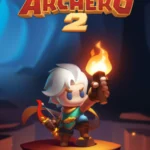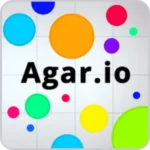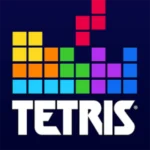Hyper-Scaled & Undetectable AI Game Hubs: The Future of Immersive Gaming
The gaming landscape is on the cusp of a seismic transformation, moving beyond static, pre-defined worlds into an era of dynamic, infinitely adaptable experiences. At the heart of this revolution lies the emergence of AI game hubs – interconnected platforms where artificial intelligence isn’t merely an opponent or a non-player character, but the very architect of reality. These hubs promise hyper-scaled gaming environments, capable of supporting unprecedented numbers of concurrent players while delivering personalized, ever-evolving content. The true marvel, however, lies in their ability to foster undetectable AI games, where the hand of artificial intelligence is so seamlessly integrated that its generative power becomes indistinguishable from organic design. This article delves into the profound implications of these pioneering platforms, revealing how they are shaping the future of gaming, fostering truly immersive AI gaming, and establishing new paradigms for content creation and distribution. We explore the intricate mechanisms that allow for such vast scalability and the subtle art of AI integration that redefines player engagement.
The Genesis of AI Game Hubs: Beyond Static Worlds
For decades, games have largely been finite creations, painstakingly crafted by human designers, artists, and programmers. While expansive, their boundaries were ultimately fixed. The advent of sophisticated AI models, particularly generative AI, shatters these limitations. AI game hubs represent a paradigm shift, moving from handcrafted content to dynamically generated universes. Imagine a platform where entire ecosystems, quests, characters, and storylines emerge on the fly, responding directly to player actions, preferences, and even emotional states. This isn’t just about procedural generation on a grander scale; it’s about intelligent systems that learn, adapt, and predict, constantly evolving the game world around the players. This shift is critical for achieving true hyper-scaled gaming, as manual content creation simply cannot keep pace with the demand for novel experiences across millions of users.
These hubs leverage advanced machine learning algorithms to process vast datasets of gaming interactions, narrative structures, and environmental designs. By understanding the core tenets of engaging gameplay and compelling storytelling, the AI can then extrapolate and synthesize entirely new elements. The goal is to ensure that the content generated is not only unique but also maintains a consistent quality and thematic coherence. This foundational capability is what allows for the creation of truly undetectable AI games; the AI’s influence is so deeply embedded and organically responsive that it feels less like an algorithm and more like a living, breathing world. This marks a significant leap in the future of gaming, promising an end to content drought and an era of perpetual discovery. Players will never exhaust the possibilities within these new digital frontiers, finding new challenges and stories every time they log in. For a glimpse into the evolution that led to this, one might consider the journey of browser games over time: How Browser Games Have Evolved Over The Years.
Redefining Immersion: AI-Powered Narratives and World Generation
At the core of immersive AI gaming lies the AI’s capacity to transcend pre-scripted narratives. Traditional games, even those with branching storylines, ultimately operate within a predefined set of choices and outcomes. In AI game hubs, narratives become truly emergent, co-created by the AI and the players themselves. Imagine an AI dungeon master, not bound by a rulebook, but learning your playstyle, preferences for plot twists, and even your emotional responses, then weaving a story that is uniquely tailored to you. This is the promise of best AI story driven browser games no download – the ability to dive into deeply personal sagas without the friction of downloads or installations. The AI can dynamically introduce new characters with complex motivations, generate unexpected alliances or betrayals, and even alter the very fabric of the game world based on the collective actions of players.
World generation, too, moves beyond mere procedural landscapes. Generative AI platforms can create entire civilizations, intricate cityscapes, and vast natural environments that feel genuinely lived-in and organic. This isn’t random noise; it’s intelligent design informed by architectural principles, ecological systems, and even historical trends simulated within the AI’s models. This level of detail and responsiveness ensures that the player’s surroundings are always fresh, relevant, and visually stunning, contributing significantly to the feeling of an undetectable AI game. The environment itself becomes a character, subtly guiding or challenging the player, adapting to their presence. For instance, imagine exploring a new biome that dynamically shifts its flora and fauna based on your previous decisions in other areas of the world, creating a cohesive, evolving narrative across geographical space. This dynamic world-building is essential for scalable gaming content, as human teams cannot possibly create such vast and diverse content at the speed and scale required by these hubs. The seamlessness of this generation is paramount; players should feel as if they are exploring a hand-crafted masterpiece, not a randomly assembled collage. This level of depth allows for incredible replayability and ensures that no two player journeys are identical, making every session a unique adventure in immersive AI gaming. This evolution can be seen even in simpler forms like the Best Browser-Based RPGs of 2024, which hint at the potential for AI to enhance depth and replayability.
The Undetectable AI: Seamless Integration and Organic Player Experiences
The term “undetectable AI” isn’t about hiding AI’s presence; it’s about its complete and seamless integration into the game’s fabric, rendering its influence invisible because it feels utterly natural. In an undetectable AI game, the AI doesn’t feel like a separate entity or a set of rules; it feels like the universe itself responding with organic intelligence. This involves highly sophisticated behavioral AI that governs NPCs, not just through pre-programmed scripts, but through emergent behaviors driven by complex motivations, relationships, and environmental stimuli. NPCs might remember past interactions, develop grudges or affections, and even learn from their mistakes or successes, making every encounter unique. This depth creates a profound sense of agency for the player, as their actions truly ripple through the world.
Furthermore, the generative game platforms within these AI game hubs employ AI not just for content, but for experience optimization. This includes dynamic difficulty scaling that adapts to a player’s skill level in real-time without feeling arbitrary, ensuring perpetual engagement without frustration. It also extends to adaptive UI/UX elements, where the game interface subtly adjusts to a player’s habits, providing information or shortcuts precisely when needed, enhancing the intuitive flow of gameplay. The AI might also predict player churn or boredom and introduce novel elements or challenges to re-engage them, all while remaining imperceptible. The ultimate goal is to remove any artificial barriers between the player and the immersive experience, making the AI’s contributions feel like an inherent quality of a living world, rather than a computational layer. This is crucial for future of gaming, as players demand more personalized and responsive experiences. The effectiveness of this subtle AI is what truly elevates these platforms, transforming simple interactions into deeply memorable moments, embodying the true spirit of immersive AI gaming.
Beyond the Horizon: Generative AI for Infinite Content and Personalization
The true promise of generative game platforms within AI game hubs lies in their capacity for infinite content. Traditional games are bottlenecked by human production pipelines. Artists, writers, and designers create a finite amount of content, which then needs to be patched, expanded, or sequelized. With generative AI, this limitation vanishes. The AI can create endless variations of quests, new weapon designs, unique character models, evolving lore, and even entirely new game mechanics on the fly. This provides truly scalable gaming content, ensuring that players never run out of fresh experiences. Imagine an RPG where every new dungeon crawl is procedurally generated but adheres to a consistent thematic style, and every monster encountered has unique abilities derived from its AI-generated physiology. This level of dynamic content creation ensures immense replayability and constant novelty.
Beyond quantity, generative AI excels at personalization. By analyzing a player’s playstyle, preferences, and even emotional responses (via biometrics or behavioral patterns), the AI can tailor content specifically for them. A player who enjoys exploration might find hidden paths and lore expanding for them, while a combat-focused player might encounter more challenging enemy types or arenas. This level of bespoke experience is a hallmark of immersive AI gaming. The AI can learn that you prefer stealth over direct confrontation, and subtly adjust mission parameters or enemy patrols to encourage your preferred playstyle without forcing it. This goes beyond simple choice-and-consequence; it’s about a living game world that intuitively understands and caters to individual desires, making every player’s journey uniquely their own. This revolutionary approach defines the future of gaming, moving from mass-produced entertainment to hyper-personalized digital realities, a feat that would be impossible without sophisticated AI in game development. The endless variations ensure that the game remains fresh for years, preventing the staleness that often plagues even the largest traditional games. This is where the magic of an undetectable AI game truly shines: the game feels like it was custom-made for you, every moment, every challenge, every victory.
Scaling New Heights: Cloud Gaming Infrastructure for Billions
The vision of hyper-scaled gaming requires an equally hyper-scaled infrastructure. This is where cloud gaming browser AI simulators come into play, forming the backbone of these futuristic game hubs. Moving processing from local devices to vast cloud data centers eliminates hardware barriers, allowing anyone with an internet connection to access graphically intensive, AI-driven experiences. The “undetectable” aspect isnends beyond just the AI within the game; it extends to the seamlessness of the cloud delivery itself. Latency, once the bane of cloud gaming, is being minimized through edge computing and advanced network optimization techniques, making the experience feel as responsive as if the game were running locally. This means truly instant access: you can play AI-powered browser games instantly, without lengthy downloads or installations.
These cloud infrastructures are not just hosting servers; they are intelligent, self-optimizing networks. AI themselves manage resource allocation, predict peak demand, and dynamically scale server instances to ensure smooth performance for millions or even billions of concurrent players. This intelligent orchestration is critical for maintaining the high fidelity and responsiveness required for immersive AI gaming. Furthermore, the cloud provides the computational horsepower necessary for the generative AI models that create the game content in real-time. Training these large language models (LLMs) and diffusion models, and then deploying them to generate worlds, characters, and narratives on demand, requires immense computational resources that only large-scale cloud platforms can provide. This symbiotic relationship between generative AI and robust cloud infrastructure is the fundamental enabler of the future of gaming as envisioned by AI game hubs. For more insights on scaling and performance, consider how performance tips for browser games apply on a smaller scale: Browser Game Performance Tips.
The Evolution of Browser-Based Gaming: From Pixels to AI Realms
Browser-based gaming has steadily evolved from simple Flash games to complex HTML5 experiences. The emergence of AI game hubs represents the next exponential leap, particularly with the rise of AI-enhanced browser RPGs free to play 2025. These aren’t just incremental improvements; they are a fundamental re-imagining of what a browser game can be. Thanks to cloud streaming and increasingly powerful web technologies, browser games are shedding their “casual” stigma and becoming capable of delivering AAA-level graphics and deep, expansive gameplay. The integration of AI further amplifies this, allowing for experiences that were once confined to high-end PCs or consoles to be accessible instantly through a web browser.
The convenience factor of being able to play AI-powered browser games instantly cannot be overstated. No downloads, no installations, no compatibility issues – just click and play. This low barrier to entry is crucial for achieving hyper-scaled gaming populations. It democratizes access to cutting-edge interactive entertainment, inviting a global audience into these evolving virtual worlds. These browser-based experiences will leverage the full power of generative game platforms, meaning every time you open a tab, you could be stepping into a uniquely crafted adventure. The AI ensures that even within a browser, the experience remains rich, dynamic, and endlessly engaging, creating an undetectable AI game that feels as responsive and fluid as any native application. This accessibility is paramount to the widespread adoption and success of these new forms of immersive AI gaming, blurring the lines between what’s possible in a browser and what requires dedicated hardware. Users can find parallels in the simplicity of older browser games like Top 15 Free Browser Games, but the AI-powered versions will offer unprecedented depth.
Multiplayer Reimagined: AI as Dynamic Opponents and Companions
Multiplayer gaming is the social backbone of the industry, and AI game hubs are poised to revolutionize it with next-gen AI multiplayer browser games. Beyond simply pitting players against each other, AI will act as dynamic collaborators and adversaries, enriching the social fabric of the game. Imagine an AI companion who genuinely learns your combat style, understands your strategic preferences, and communicates intelligently, adapting its support in real-time. Or consider AI opponents who don’t just follow scripts but analyze player tactics, adapt their strategies, and even develop rivalries, making every competitive match a fresh, unpredictable challenge. This level of dynamic AI integration makes the multiplayer experience profoundly more engaging and less repetitive.
The “undetectable” aspect is particularly crucial here. Players shouldn’t feel like they’re playing with or against a bot; they should experience an organic, intelligent presence. This means AI that can mimic human-like errors, display flashes of brilliance, and even exhibit emergent social behaviors, making it difficult to discern human from machine. This leads to truly immersive AI gaming, where the lines between player and AI blur, creating richer, more varied social dynamics. For massive multiplayer environments inherent in hyper-scaled gaming, AI can fill out worlds, populate cities, and create background activity that makes the environment feel alive, even if player numbers are fluctuating. These AI entities contribute to the feeling of a vibrant, persistent world, offering dynamic quests, trade opportunities, or even just lively banter, ensuring the world never feels empty. This evolution of multiplayer will redefine social interaction in digital spaces, making every interaction, whether with a human or an AI, a meaningful part of the unfolding narrative, proving that AI in game development is pushing new boundaries. For a historical perspective on multiplayer experiences, see Multiplayer Browser Games: Ultimate List 2024.
Ethical AI in Gaming: Ensuring Fairness and Avoiding Manipulation
As AI game hubs become more prevalent, the ethical considerations surrounding AI in game development rise to the forefront. The power of undetectable AI games to generate content and influence player experience brings with it a responsibility to ensure fairness, transparency (where appropriate), and player well-being. A critical aspect is preventing AI from becoming manipulative or exploitative. For instance, an AI designed to maximize engagement could inadvertently lead to addiction if not carefully constrained. Therefore, developers building these generative game platforms must integrate ethical guidelines from the ground up, ensuring AI systems prioritize positive player experience over pure metric optimization. This means building in guardrails that prevent AI from exploiting psychological vulnerabilities or creating unfair advantages, even if technically possible.
Transparency, while seemingly at odds with “undetectable,” doesn’t mean revealing the AI’s source code, but rather being clear about the AI’s role in content generation and personalization. Players should trust that the game isn’t subtly engineering outcomes against them. Mechanisms for player feedback and reporting on AI behavior will be essential, allowing the community to help refine and police the AI’s ethical boundaries. This commitment to ethical AI ensures that the future of gaming remains a positive, empowering force, rather than a tool for manipulation. As hyper-scaled gaming expands globally, establishing these ethical frameworks becomes a collaborative effort across developers, players, and regulatory bodies, ensuring that the innovation serves humanity, not just profit. The discussion around responsible AI development is already active in broader tech circles (e.g., DeepMind Ethics & Society), and gaming must follow suit. It’s about building trust in these new, dynamic worlds. This ethical imperative contributes to the seamlessness of the experience by fostering player trust, making the AI’s influence feel benevolent and natural, further reinforcing the “undetectable” quality in a positive light.
Monetization in the AI Game Hub Era: New Economic Models
The economic models for AI game hubs will naturally evolve beyond traditional box sales or simple subscriptions. Given the capacity for hyper-scaled gaming and infinitely generated content, new monetization strategies will emerge, focusing on value-added services, dynamic content tiers, and perhaps even AI-driven economies. One model could involve tiered access to AI content generation, where players pay for more customized or unique AI-generated assets, characters, or even full story arcs. Another might be a “creator economy” driven by AI, where players can train AI models within the game to generate specific content, and then sell access to that AI’s output or the content it creates, blurring the lines between player and developer. This is a novel approach to scalable gaming content, where players become indirect participants in content generation.
Microtransactions could shift from static cosmetic items to dynamic AI-generated experiences or even “AI companions as a service” that evolve with the player. The key is that these monetization methods must feel organic to the immersive AI gaming experience, not intrusive. An undetectable AI game would integrate its economic systems so smoothly that they feel like a natural part of the game world. This might include AI-managed in-game markets that respond to supply and demand with unprecedented realism, or AI-driven advertising that seamlessly blends into the game environment without disrupting immersion. The future of gaming‘s economic landscape will likely involve adaptive pricing, personalized offers based on AI-analyzed player behavior, and perhaps even AI-managed bounties or quests that reward players with real-world value. Exploring these models will be critical for sustaining the immense computational resources required to power these advanced generative game platforms, ensuring long-term viability and innovation. This represents a significant shift from traditional game economies, aligning with the dynamic and ever-evolving nature of AI-driven worlds. For more on game monetization, see insights from the broader gaming industry (e.g., Statista – Gaming Industry).
The Player’s Journey: Customization, Evolution, and Persistent Worlds
In the realm of AI game hubs, the player’s journey is no longer a linear path but an ever-branching, constantly evolving narrative shaped by their choices and the AI’s responsiveness. Customization moves beyond mere aesthetics; players will be able to influence fundamental aspects of their character’s progression, abilities, and even their backstory, all of which the AI will weave into the unfolding narrative. This deep level of personalization is a cornerstone of immersive AI gaming. The AI remembers every decision, every victory, every failure, and subtly integrates these elements into future encounters, making the player truly feel like the protagonist of their own epic. This dynamic adaptation is key to maintaining the illusion of an undetectable AI game, as the world feels handcrafted for the individual.
Furthermore, these hubs foster persistent worlds that genuinely evolve over time, not just through developer updates, but through the continuous, real-time actions of both players and AI. Cities might grow or crumble, factions might rise or fall, and ecological systems might flourish or degrade, all driven by the collective impact of millions of player decisions and the AI’s generative capabilities. Imagine a world where your individual heroic deed in one region ripples through the entire continent, causing political shifts, economic booms, or even new AI-generated threats to emerge far away. This level of dynamic persistence provides an unparalleled sense of consequence and agency, making the game world feel truly alive and responsive. This continuous evolution contributes to scalable gaming content, as the world perpetually renews itself. The true magic lies in the AI’s ability to maintain narrative coherence and systemic balance across these vast, evolving landscapes, ensuring that the experience remains engaging and challenging without feeling arbitrary or overwhelming. This represents the ultimate expression of the future of gaming: worlds that breathe, learn, and grow alongside their inhabitants, offering limitless adventures that are deeply personal and profoundly interconnected. The feeling of a living, breathing world, always fresh and responsive, is the ultimate goal, and it’s achieved through the genius of AI in game development. The idea of persistent worlds has been a dream for a long time, dating back to early MMORPGs, but AI makes it infinitely more dynamic (e.g., Wikipedia on Persistent Worlds).
Advanced AI-Enhanced Browser RPGs: Free-to-Play and Accessible
The confluence of advanced AI, cloud infrastructure, and evolving web technologies is particularly transformative for the RPG genre. In 2025, we are witnessing the proliferation of AI-enhanced browser RPGs free to play, fundamentally altering accessibility and depth. These games leverage AI not just for narratives and world-building, but for intricate character interactions, dynamic quest generation, and highly personalized skill progression. Imagine an RPG where the dialogue with every NPC is dynamically generated based on your character’s reputation, past actions, and even real-time emotional detection via AI. This level of responsiveness makes every conversation meaningful and every choice impactful, contributing to the feeling of an undetectable AI game.
The free-to-play model, combined with instant browser access, removes significant barriers to entry, allowing millions to dive into rich, evolving role-playing experiences. Players can truly play AI-powered browser games instantly, without needing to invest in expensive hardware or long downloads. This is crucial for achieving hyper-scaled gaming populations, bringing the depth of complex RPGs to a mainstream audience. The AI ensures that even within a free-to-play framework, the content remains fresh and engaging, with new areas, challenges, and storylines perpetually emerging. This continuous stream of scalable gaming content through generative AI keeps players invested for longer periods, fostering deep communities around these ever-expanding worlds. These RPGs will offer a personalized epic, where every adventurer’s path is unique, driven by their decisions and the AI’s boundless creativity, showcasing the true potential of AI in game development. For a taste of current browser RPGs, you might look at Best Browser RPGs with Quests, which provides a foundation for AI to enhance depth.
Unleashing Creativity: Player-AI Co-Creation and Modding
One of the most exciting frontiers within AI game hubs is the concept of player-AI co-creation. Moving beyond traditional modding, these generative game platforms will empower players to directly interact with and guide the underlying AI models to create their own content. Imagine using natural language prompts to describe a new monster, a unique weapon, or even an entire questline, and watching the AI instantly bring it to life within the game. This collaborative process ensures that the scalable gaming content is not just infinitely vast but also deeply resonant with the community’s desires. The AI acts as an immensely powerful tool, democratizing game development and allowing anyone to become a content creator, regardless of their technical skills. This is a profound leap for immersive AI gaming, as players become active shapers of their digital realities.
This co-creation capability further reinforces the “undetectable” nature of the AI. When players are actively involved in guiding the AI’s generative processes, the line between AI-created and human-created content blurs. The game world becomes a truly collaborative artistic endeavor, where the AI serves as the ultimate creative assistant, translating human ideas into tangible in-game assets and experiences at unparalleled speed and fidelity. This dynamic modding framework ensures that the AI game hubs remain vibrant and responsive to community trends, constantly evolving with fresh, player-driven ideas. The future of gaming isn’t just about AI building worlds for players; it’s about AI empowering players to build worlds for themselves and each other, creating a truly symbiotic relationship. This shift fosters an unprecedented level of player agency and ownership, transforming passive consumption into active participation, and ensuring that the content pipeline is never exhausted, thanks to the combined power of human imagination and AI in game development. This goes far beyond traditional modding, as seen in communities for games like Minecraft Online Game, by giving players direct access to the generative engine.
Conclusion: The Inevitable Ascent of AI-Driven Interactive Entertainment
The emergence of Hyper-Scaled & Undetectable AI Game Hubs marks a pivotal moment in the history of interactive entertainment. We have journeyed through a landscape where AI game hubs serve as the foundation for endlessly evolving digital worlds, delivering truly hyper-scaled gaming experiences accessible to billions. The discussion revealed how the subtle integration of AI fosters undetectable AI games, where artificial intelligence becomes an inherent, organic force, driving narratives, shaping environments, and personalizing every facet of the player’s journey. From the instant accessibility of AI-enhanced browser RPGs free to play 2025 to the dynamic multiplayer encounters in next-gen AI multiplayer browser games, the future is clear. The power of generative game platforms and the underlying commitment to ethical AI in game development are redefining what it means to experience a virtual world. Players can now play AI-powered browser games instantly, entering realms of unparalleled depth and personalized adventure.
In essence, these hubs are not just a technological advancement; they represent a fundamental shift in the relationship between players and digital worlds. The continuous stream of scalable gaming content ensures perpetual novelty, while the deep personalization guarantees that every moment spent in these universes is uniquely tailored. The future of gaming is one where creativity knows no bounds, where immersive experiences are the norm, and where the line between the artificial and the authentic becomes beautifully blurred. As these AI game hubs mature, they will not only redefine entertainment but also shape our very perception of digital reality, offering infinite possibilities in truly immersive AI gaming. The revolution is not coming; it is already here, weaving itself into the fabric of our play, making every adventure an unpredictable, unparalleled masterpiece.


































































